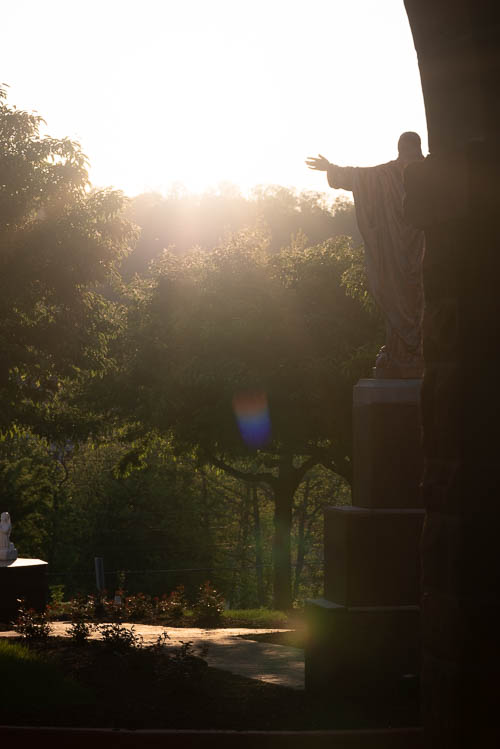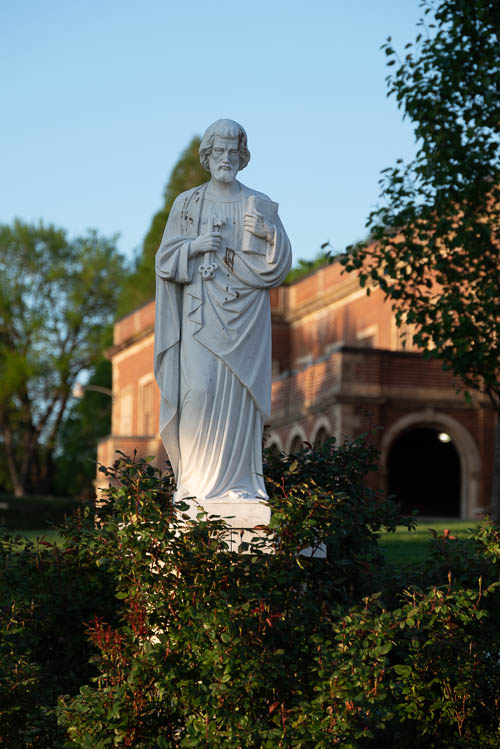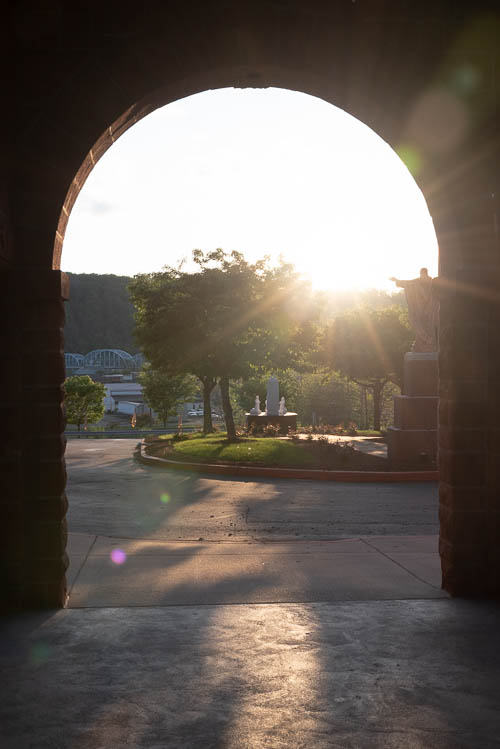Here is my sister’s blog post about her camping trip to and her experiences with the Pocono Mountinas / Hickory Run State Park / the Boulder Field / the Shades of Death Trail. My sister Katie and her husband hiked the Shades of Death Trail and visited the massive Boulder Field with their five-year-old and their three-year-old.
The One with the Cat Mural (Cat Mural by Raphael Pantalone)
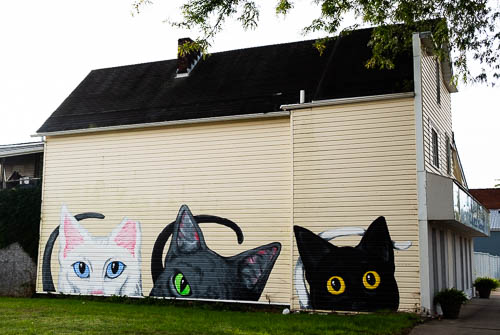
I get my ideas from other places, just like a lot of other people.
You’re probably sick of hearing about this, but after Covid happened, I spent much time consuming Adam Selzer’s “Mysterious Chicago” Facebook page. Adam turned each Monday into “Mural Monday.” On each Monday, he posts virtual tours of himself walking around Chicago neighborhoods looking at murals. When he goes on vacation and his vacation happens to overlap with a Monday, he posts video of whatever town he happens to be in on that day.
So, New Kensington is in the process of being cleaned up and repaired. Preservationists secured funding to paint murals here. (Just like Chicago!)
I said to myself, “Jenny, you know of some people who used to live here, and then they moved away to other parts of the country. Maybe they would like to see these new murals.”
I made this assumption because my mom moved away from the Pittsburgh neighborhood of Carrick in the 1970’s and her parents left in the 1990’s, but every so often, she and my dad travelled to Pittsburgh for various reasons and some of their trips included quick drives around Carrick.
I don’t plan to do Mural Monday. I will just photograph and post murals when the mood strikes me, and then tag these posts with the “Murals” category.
So, here’s a cat mural for you. This cat mural covers the side of the building occupied by Frankie’s Friends Cat Rescue in downtown New Kensington. Facebook taught me that Raphael Pantalone painted this mural as well as additional cat murals inside the building.
Hauntings At The Hoyt Museum in Western Pennsylvania

I’ve blogged in the past about my favorite spooky podcasts. In fact, here’s my most updated list of 13 Haunted History Podcasts.
My list included Snap Judgement Presents: Spooked. Now, WNYC studios presented the podcast Snap Judgement. WNYC and Snap Judgement originally introduced Spooked to me. That’s why I included the NPR link here.
Spooked later moved to a subscriber-only model on Luminary. However, Luminary occasionally releases former subscriber-only episodes to the public.
My iTunes and Spotify profiles both advised me that Spooked JUST released to the public a former subscriber-only episode titled “Fright At The Museum.” The episode detailed a former museum intern’s allegedly true experiences with ghosts at a museum which she referred to as The Hoyt.
I Googled “The Hoyt” and its alleged ghosts “Alexander Hoyt” and “May Emma Hoyt” and I discovered that “The Hoyt” is actually the Hoyt Art Center in New Castle, Pennsylvania.
New Castle is north of Pittsburgh and south of Erie in Western Pennsylvania. If you like to shop at outlet malls, note that New Castle is 16 miles south of the outlet mall in Grove City.
Through this podcast and my Google research, I learned that The Hoyt’s physical location consists of the two adjacent, century-old mansions once occupied by the siblings May Emma and Alexander.
May Emma allegedly lived a Roaring Twenties lifestyle not approved by Alexander. Alexander allegedly burned May Emma’s prized possessions after she died. Hence the ghost stories.
I learned that only very recently did preservationists undertake a major restoration project at The Hoyt. Restoration continues.
I understand. Jonathan and I live in a house built in the 1890’s. Restoration continues at our establishment as well. In fact, I soon hope to blog about a major project at our house!
Once upon a time, I myself worked as a “sort of” intern at an old building-turned-art center in a recovering Rust Belt town. I worked as the “Events Coordinator” at the Bottleworks Ethnic Arts Center in the Cambria City neighborhood of Johnstown. (My placement came from participation in Americorps / Pennsylvania Mountain Service Corps/ PMSC.) The Bottleworks occupied (still occupies) a former bottle factory – hence the name. I never encountered any ghosts at Bottleworks, though. Maybe I just didn’t pay enough attention.
Adventuring With Katie at Shenandoah National Park at Skyland and Old Rag Mountain
My sister, Katie, blogs about her adventures. Here is Katie’s new post Adventuring With Katie at Shenandoah National Park at Skyland and Old Rag Mountain
My TRUE Parade Hero (It’s NOT Who You Think!)
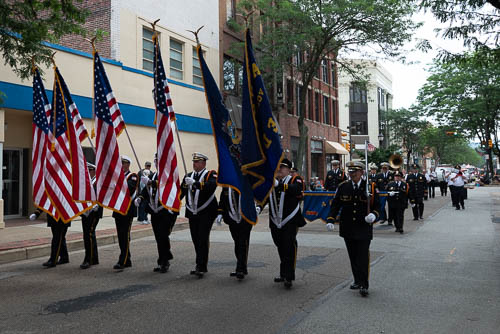
This blog is “The Parnassus Pen.” Parnassus is the oldest neighborhood of New Kensington, so here’s a New Kensington update.
Scroll to the end of this post to learn who I nominate as the TRUE hero of the 2021 parade for the Western Pennsylvania Firemen’s Association.
Super awesome REVITALIZERS – that is, people who poured time and money into fixing up downtown New Kensington – rolled out the first “Fridays on Fifth” this July, which was last month. These super awesome folks intend to celebrate “Fridays on Fifth” on Fifth Avenue on – wait for it – the last Friday evening of each month. Well, each month when we don’t freeze off our dupas from standing outside on Fifth Avenue.
Here are photos that I took of last month’s inaugural Friday on Fifth.
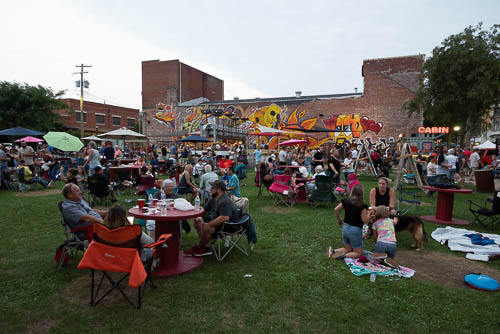
When you look at my below photo, you will see a red brick wall directly behind a food truck. You will see that the building to which this wall belongs has a verticle sign that includes in white the letters “EGER.” This building housed the former Bloser’s Jewelers in downtown New Kensington. Fun fact: Crews filmed a scene from the 2019 movie “Where’d You Go, Bernadette?,” at this building.
(Confession: I read Maria Semple’s 2012 fiction novel upon which they based this movie adaptation. I haven’t yet watched the actual movie. Have you read the book or watched the movie? Just a heads-up: the story takes place in Seattle and the dad in the movie works for Microsoft. That’s one way that the book lets readers know that this family is FANCY and SPECIAL. The movie producers used Pittsburgh and the towns around Pittsburgh (such as New Kensington) as a stand-in for Seattle. Pittsburgh’s a less expensive city. )

So, now I want to share an observation. I live within walking distance of the blocks where the “Fridays on Fifth” events were held. In fact, my husband walks from our house to downtown New Kensington twice a day. I could have walked to this event from my house. I should have walked to this event.
However, the evening of this event – July 23 – was really hot and muggy. I’m lazy and I’m out of shape. So, I drove to this event. However, I showed up about an hour after the event started. I drove past THREE full, generous-sized parking lots before I found an open parking spot.
As soon as I finally parked, I took a photo of a building because I liked the way that the setting sun hit the building. Here is the photo:
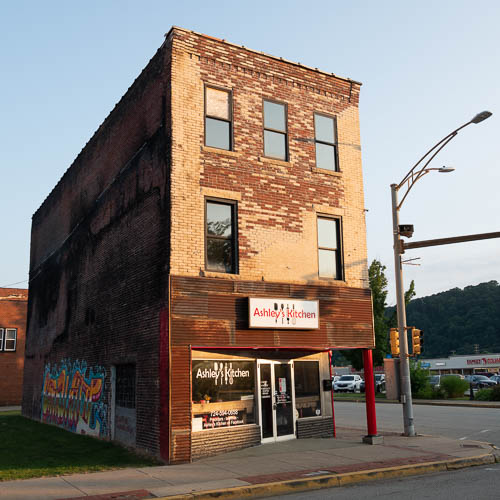
Now, had I posted this photo by itself with no context, I just KNOW that I would have received comments to the effect of, “That’s so sad! I remember when downtown New Kensington THRIVED. Now all of the streets are so empty! Just look how empty everything looks in that photo!”
You can’t tell from just looking at this one photo that just one block away, the street was closed and PACKED with people.
So anyway, the Western Pennsylvania Firemen’s Association held its 2021 convention and parade in New Kensington on August 7. Jonathan is a volunteer firefighter in New Kensington, so convention events busied him that entire weekend. I watched the parade and I posted about a hundred parade photos here on my Facebook page.
Now, I want to say something about my parade photos that relates to something that I just said. On more than one occasion, after I posted New Kensington parade photos, a commenter would post something to the effect of, “Look at that empty street in the background! I remember that when I watched parades in New Kensington back in the day, the streets were PACKED with people!”
So, I want to point out several things about my parade photos:
1.) I don’t watch parades near the grandstand. Even pre-Covid, I chose to not be around huge crowds of people. I choose less popular blocks when I watch parades. I usually sit on Fifth Avenue for most of the New Kensington parades. The grand stand usually sits on Fourth Avenue. (New Kensington parade routes often use both streets.)
2.) I burn VERY easily. So, sit in the shade when I watch parades. Fifth Avenue is very narrow. The sun usually hits at an angle so that one side of the street is shady and one side of the street gets all of the sun. I sit on the shady side. So do a lot of other people. Not many people chose to sit out in the sun, on the opposite side of me.
3.) I get paid $0 to take parade photos. The most that I ever made from taking a photo was $15 and a ribbon when I was ten years old and I won second place or something in the juvenile landscape division of the photography competition at the Berlin, Pennsylvania Community Fair. (I look a photo from a scenic viewing platform on top of Mount Washington in Pittsburgh.) So, I don’t sit out in the sun in order to take parade photos that have more people in the background.
So, here’s the thing. You know how I just mentioned that I’m lazy? Well, when Jonathan and I go out and have mini photography lessons, Jonathan tries to encourage me to switch camera lenses during our photo shoots. I usually refuse because I’m lazy. Also, because I’m clumsy and I’m not confident that I can switch out camera lenses “in the wild” and not drop one or both of the lenses.
So, at this month’s parade for the Western Pennsylvania Firemen’s Association, I borrowed Jonathan’s fairly new, fairly expensive (for us) special camera lens. I switched camera lenses several times during the parade. I DID NOT drop any camera lenses.
However, I lost the the screw-on plastic hood for Jonathan’s special camera lens. I figured this out about an hour after I got home from the parade. I drove back to the parade route and I retraced my own walking route, looking for said hood.
I did this during a thunderstorm and a torrential downpour.
I did not find the hood.
I jumped on the internet. I found a replacement hood from a photography supply shop for $29.99 and free shipping.
So, it actually costs me money to take photos at parades.
I was really excited to see Somerset represented in this parade. I grew up in Somerset County. My dad retired from teaching at Somerset Area High School. I grew up in the next school district over, Berlin Brothersvalley. I belonged to Berlin’s high school marching band for four years. I marched in Somerset’s own Summerfest parade every July for four years. The Summerfest parade always happened the same week as my birthday. So, here’s Somerset’s fire truck as it appeared in New Kensington’s parade.
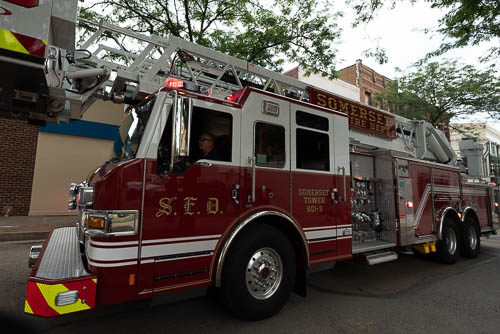
Now, for the moment you’ve been waiting for:
Here’s my personal HERO of the 2021 parade for the Western Pennsylvania Firemen’s Association.
It’s this woman:
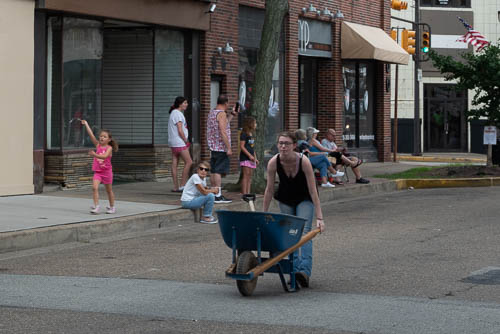
I don’t know this woman’s name. She pushed a wheelbarrow behind the parade’s horse partcipants. I didn’t personally witness this woman shovel horse dung off of Fifth Avenue. However, I assumed that she shoveled horse dung off of Fifth Avenue and into the wheelbarrow that she pushed.
Now, all of the men and women who volunteer for the fire service are heros. My own husband belongs to New Kensington’s volunteer fire department. I know that he worked off his butt during convention time.
However, I nominated the horse dung shoveler as my personal parade hero for this reason:
As I mentioned above, I marched in Berlin Brothervalley High School’s marching band (the Mighty Marching Mountaineers) for four years. I marched in many a parade BEHIND horses. On streets COVERED with horse dung. Apparently, cleaning horse dung off of streets during parades wasn’t a thing when I was a teenager in Somerset County? (Were the parade organizers in Berlin, Meyersdale, and Somerset a bunch of uncouth barbarians?)
For instance, I mentioned above that I marched in the Summerfest parade in Somerset every July for four years. It happened the same week as my birthday. One year, the parade happened ON my birthday. I marched on a horse dung-covered street in downtown Somerset on my fourteenth birthday.
So, as a former marching band kid, I’m really happy to see that New Kensington parades include horse dung shovelers.
My runner-up for parade hero is the New Kensington parade organizer who made sure that the horse group brought their own horse dung shoveler.
Did the Jersey Devil Fly to Pennsylvania? Also, What is REAL Fame?

The Jersey Devil is a mythological creature. Its origin story maintains that the Jersey Devil was the result of a 13th birth to a (human) colonial family in the Pine Barrens of New Jersey. The Jersey Devil terrorized the family (or killed the family, according to some versions of the tale). Then, it flew up the family’s chimney. People have reported it flying for hundreds of years now. Mostly in New Jersey, of course. However, at least one person reported seeing it in Pennsylvania, across the Delaware River.
This Cryptid also named a professional hockey team and inspired its mascot. I speak of the New Jersey Devils. I work in an office in Pittsburgh. My one manager – a Philadelphia-area native – sits directly across an aisle from me. He placed a pillow featuring the New Jersey Devils’ “devil” mascot on a shelf directly above his desk. I see that devil pillow every time that I look at his office’s glass front wall.
So, the locals adopted the Jersey Devil as a beloved part of their culture.
I listened to these podcasts about the Jersey Devil:
Episode 9: A Devil on the Roof from the Lore podcast by Aaron Mahnke
Episode 314: The Jersey Devil from Last Podcast on the Left
(Just a warning that Last Podcast on the Left (LPOTL) includes adult language and content.)
I’ve read several books on folklore that include chapters or at least mention of the Jersey Devil. Depending on your source, you will read different things about the Jersey Devil.
Some of my sources speculate that people who reported seeing the Jersey Devil actually saw a sandhill crane. That’s why I included at the top of this blog post a photo of two sandhill cranes. Here’s another photo of the same pair of sandhill cranes:
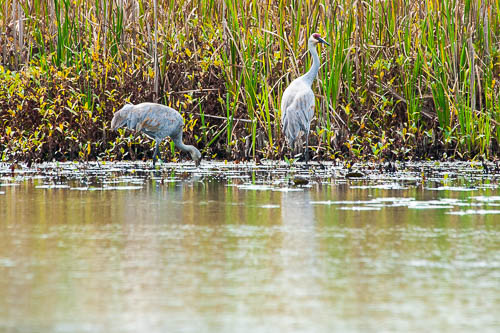
I took these particular photos in October 2020 from a kayak on Lake Arthur at Moraine State Park in Western Pennsylvania. The park sits about 90 miles south of PA’s Lake Erie shoreline. When I took my photos of these birds, the birds ate in the wetlands at the lake’s edge. I made a lot of noise. The birds ate. They did not flee from me. They just ate. I took these photos during the same week that I read that biologists anticipated significant numbers of migratory birds to fly south for the winter. I am under the impression (I am NOT a scientist) that these birds stopped at Lake Arthur to feed during a migration from somewhere on the Great Lakes to somewhere south.
Here are different sandhill cranes that I saw on an island of Lake Huron in Northern Michigan in August 2020 and August 2021:
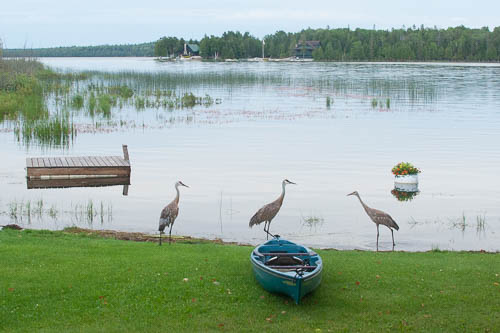

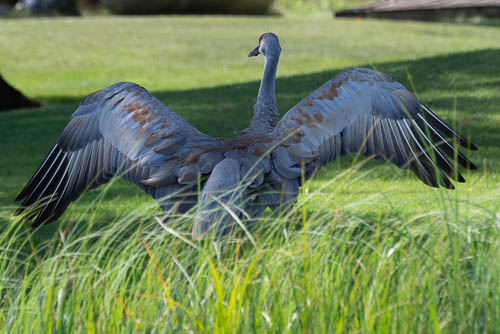
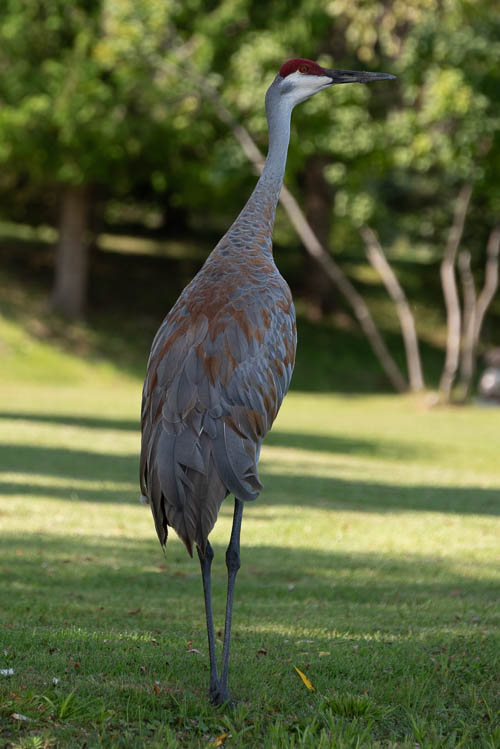
I’ve established what sandhill cranes look like. My crane photos are all from the Great Lakes region. However, from what I understand (again, I am NOT a scientist), sandhill cranes have a range that includes other areas of North America.
Was the New Jersey Devil actually a “Pennsylvania” Sandhill Crane?
Also, what does it actually take to be famous through the ages?
I blogged about American Naval hero Stephen Decatur a few days ago. He defeated pirates. He won a Medal of Honor. He married a socially elite woman. He and his wife were an early 1800’s power couple! He lived in a mansion near the White House. He seconded Oliver Hazard Perry in a duel. He then died in a duel himself. A bunch of people who were born before the American Civil War were named after him.
And – he (allegedly) saw the Jersey Devil while he was testing cannons for the United States military. He (allegedly) fired a cannonball at the poor creature.
And – for me – the whole Jersey Devil story is what convinced me that Stephen Decatur will not be forgotten in America. He was famous enough to be linked in folklore to a beloved American figure – the Jersey Devil.
Just for the record, several sources that I consumed also linked Napoleon’s brother, Joseph, to a Jersey Devil sighting. Joseph Bonaparte used to be the King of Spain. After Napoleon’s defeat, Joseph had to move to New Jersey. The Canadian band Moxy Früvous has a song titled King of Spain that begins with the lyrics “Once I was the King of Spain, now I eat humble pie.” The song’s lyrics include mention of employment in a North American pizzaria. I personally think that the song is a dig at Joseph Bonaparte – the former King of Spain who had to move to Jersey, and then went down in folklore for his alleged run-in with the Jersey Devil.
Remastered: When Duelers Sailed the Great Lakes
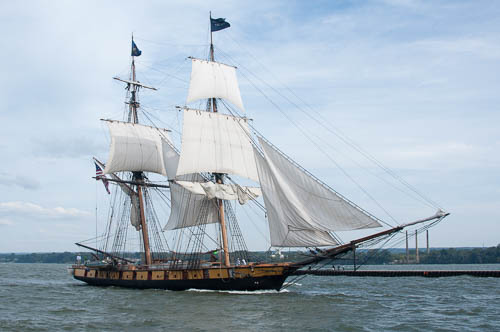
Updated July 1, 2021
My blog’s most popular post is about the time that Jonathan and I accidentally sailed into Misery Bay off of Presque Isle State Park in Erie, Pennsylvania.
Presque Isle State Park now features a monument to the War of 1812’s American naval hero Oliver Hazard Perry. The monument at the end of a little peninsula sits next to Misery Bay. In fact, when my husband and I sail, we try to use the Perry Monument as a landmark to prevent ourselves from sailing into Misery Bay.
Here is a photo that I took on my iPhone of the Perry Monument on Columbus Day Weekend in 2019. An organization associated with the National Guard decorated the monument minutes before I took the photo.
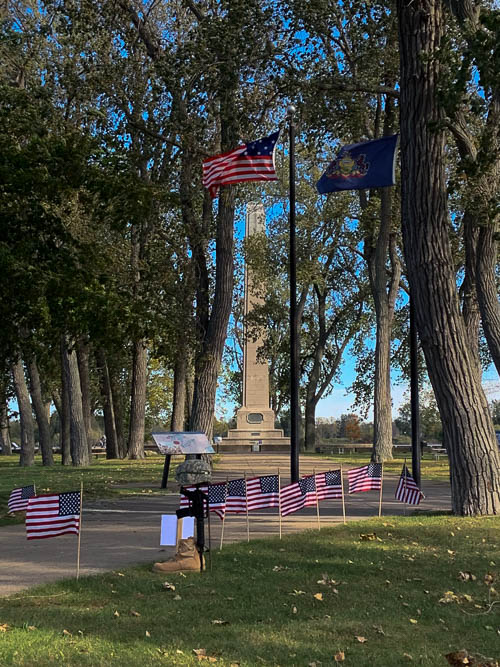
I took an interest in the Perry Monument that sits next to Misery Bay when I visited Erie for the very first time around the age of 10 or so. I was actually born in Perry County in Central Pennsylvania. I lived there for the first seven years of my life. So, after we moved to Western Pennsylvania, I was very excited to see a monument dedicated to the namesake of my original home. I had my parents take a photo of me standing next to the monument. On this same trip, I took a pontoon boat tour offered through Presque Isle State Park. I learned about the folklore surrounding Oliver Hazard Perry and his experiences with Misery Bay and Graveyard Pond during the War of 1812.
Here’s what I didn’t learn on this boat tour:
Some of the American Naval heros of the War of 1812 era – including men who sailed the Great Lakes – dueled. Some of them died in duels.
I learned this much later by reading Wikipedia. So, I trust that Wikipedia and many published books about U.S. Naval history will satisfy you much more on the particular details of this subject than I can in a 1,000 word (or whatever) blog post.
But for example: In 1818, Oliver Hazard Perry fought in a duel. He and his opponent survived. However, Perry chose for his “second” a man who actually did die in his own duel just a few years later. That man was Stephen Decatur.
I don’t remember learning about Stephen Decatur in school. However, I don’t remember a lot of things from my U.S. History classes, even though it was my favorite subject.
I liked to read biographies of famous people from the American Civil War. I noted that a lot of the biographies mentioned various other people who had the first and middle name of “Stephen Decatur.” For instance, the writer Mary Chesnut’s father was Stephen Decatur Miller. A bunch of other famous people from the early 1800’s had relatives or acquaintances named “Stephen Decatur This” or “Stephen Decatur That.”
I thought, “This Stephen Decatur guy must be pretty special if a whole bunch of people named their kids after him before the Civil War happened.“
So, I looked up Stephen Decatur on Wikipedia. I learned that he – and his fellow Naval officer Oliver Hazard Perry – and a bunch of their other fellow officers got themselves into duels. Often.
So many duels happened before the Civil War, that the Washington elite journeyed to a designated dueling grounds (the Bladensburg Dueling Grounds in Maryland). In fact, I learned from Wikipedia that Francis Scott Key’s son, Daniel, died after a duel that started over a dispute about the speed of a boat.
Stephen Decatur served as an officer in the United States Navy from 1798 – 1820. I’ll make this quick because anyone can just read all of this on Wikipedia. Decatur fought pirates along the Barbary Coast of North Africa. He witnessed his own brother, James’s, burial at sea. He earned a Medal of Honor.
Here’s an example of how highly folks regarded Decatur: I listened to Episode 9: A Devil on the Roof from the Lore podcast by Aaron Mahnke. This episode told the myth of the Jersey Devil in New Jersey’s Pine Barrens. According to the folklore, Decatur saw the Jersey Devil as he tested cannon balls in Burlington, New Jersey. The legend maintains that Decatur fired a cannon at the Jersey Devil but that the Jersey Devil flew away. This myth implies to me that if such a decorated hero as Decatur saw and reacted to the Jersey Devil, then us common folk should believe that the Jersey Devil actually existed.
I don’t know if Decatur actually saw the Jersey Devil and fired a cannon at it.
However, in 1818 Decatur did actually build his residence in Lafayette Square in Washington, a very short walk from the White House. Before this, Decatur married Susan Wheeler. I am very much under the impression that his bride was from the most well-connected tier of American society. (Aaron Burr and also Napoleon’s brother allegedly attempted to court her.) Decatur and Susan entertained the elite in their gorgeous Lafayette Square home. (In fact, you can still visit this “Historic Decatur House.”)
So, after all of the struggle and success, Stephen Decatur agreed to duel another Naval officer, James Barron, in 1820. Decatur shot Barron. Barron shot Decatur. Decatur died at the age of 41. Barron survived for several more decades.
Dueling declined after the American Civil War. I learned on Wikipedia that the last Bladensburg duel occurred in the late 1860’s. I read in a book of Maryland folklore that a suburban housing development now sits on most of Bladensburg’s “dueling grounds.”
I reworked this blog post because later this year I want to blog about that time that Stephen Decatur allegedly saw the Jersey Devil and tried to kill it. So, here’s some context about Stephen Decatur’s fame in the 1800’s. He, and Oliver Hazard Perry, and others were America’s heros. They sailed the Great Lakes in the 1800’s. Some of them also dueled – at great personal cost.
Don’t Get Your Feathers Ruffled
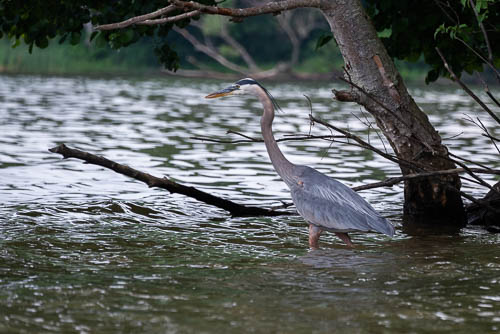
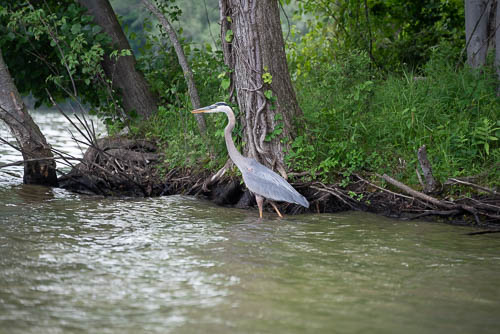
I love herons. “Heron” rhymes with “Gaffron.” Just saying.
They Built a Steel Mill on Top of It . . .
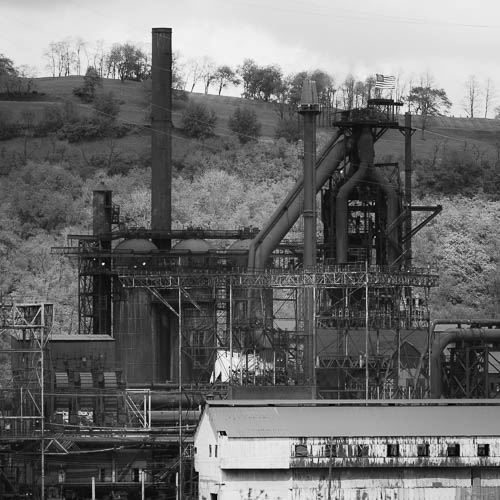
Updated May 11, 2021
What do Kennywood Park (an amusement park outside of Pittsburgh), and the Tower of London have in common?
Well, at each of these places, I heard a shout-out to British Major General Edward Braddock.
At Kennywood Park , a statue and also a Pennsylvania Museum and Historical Commission (PMHC) sign honor General Edward Braddock. When I rode the train around Kennywood, I ate a chocolate brownie as the train intercom extolled the park’s fun rides and told us about Braddock’s Defeat.
Braddock’s army and its Native American allies marched ON the land that became Kennywood Park in 1755. They crossed the Monongahela River (the Mon) at what is now Kennywood. After they crossed the river, a French army and its own Native American allies attacked them. Braddock’s army retreated.
Braddock died. A lot of his men died or taken prisoner. Women who followed the army as cooks and laundresses also died or were taken prisoner.
You can actually find a much better synopsis than mine with a 30 second Google search. A lot of Google searches refer to this as the “Battle of the Monogahela.”
However, I have an anecdote! I went to London and I toured the Tower of London. The Yeoman Warder (“Beefeater”) who was assigned to docent my tour group started off by saying:
“Is anyone in this group from Pennsylvania?”
The Yeoman Warder said something about the Yeoman’s own involvement in the Coldstream Guards. He specifically mentioned the grave of “General Braddock.”
Well, then the Yeoman Warder moved on to a different subject (after all, we were at the TOWER OF LONDON). I had to look up the Coldstream Guards later.
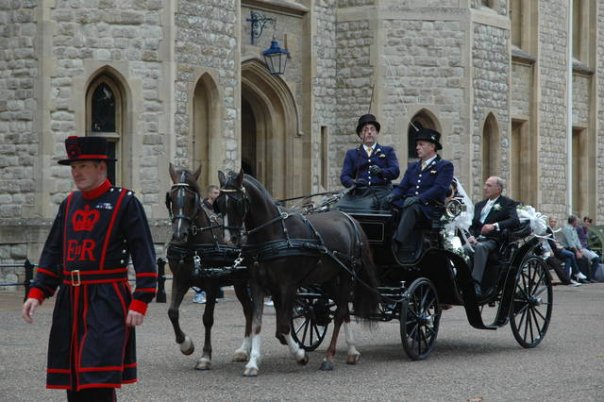
Turns out that General Braddock also belonged to the Coldstream Guards. Officers from the Coldstream Guards actually travelled to Pennsylvania to dedicate a new monument at General Braddock’s grave in 1913. So, they did this less than a year before World War I started.
Now, just to be clear, General Braddock wasn’t buried at the actual battlefield. He wasn’t buried at Kennywood Park. Braddock was wounded at the battlefield that is behind Kennywood. He died of his injuries later, and miles away, during the retreat.
A young George Washington served as an officer on Braddock’s staff. Washington had to oversee Braddock’s burial.
The Coldstream Guards dedicated a new monument at Braddock’s actual grave in Fayette County in 1913. They actually travelled from the United Kingdom to Pennsylvania and attended the dedication ceremony. Here is an old photo that I took of the actual grave in Fayette County.
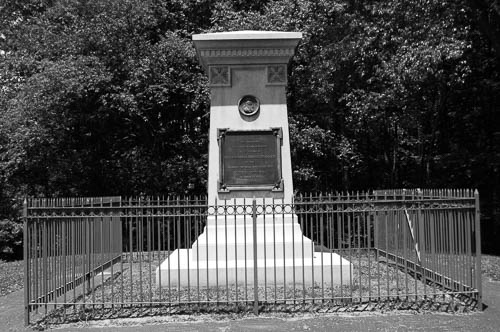
Here is a close-up of the Coldstream Guards’ regimental badge on Braddock’s grave monument:
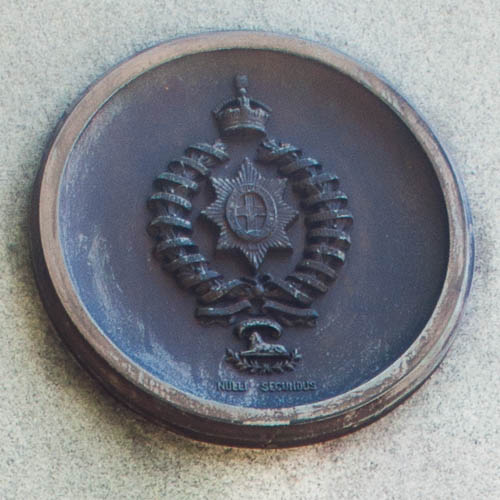
I really wish that I could blog here that the Coldstream Guards also visited Kennywood Park in 1913 during their trip to see Braddock’s grave. A trip to Kennywood in the summer before World War I! Sadly, I have not found any mention of any Coldstream Guard visit to Kennywood during any of my 20 minute Google searches.
That would be a fun story to tell, if it were true.
I don’t have anything else to add here about the Tower of London, the Coldstream Guards, or Braddock’s actual grave in Fayette County.
The rest of this is about Kennywood Park, the Battle of the Monongahela battlefield, and the bike trail that runs between these two.
I discovered a now-defunct travel blog in which the blogger visited this area because he had an interest in the battle’s military history. In his blog, he RAILED against “developers” for completely carving up the actual site of the Battle of the Monongahela. (There’s actually a “Braddock’s Battlefield History Center” IN Braddock, PA, near the site of the battle. However, I think that this blogger meant that he wanted to visit someplace where one could retrace the actual battle, like one can do at Gettysburg.)
I, too, find it a shame that people today can’t visit the actual battlefield and walk where the two armies fought.
But, the thing is –
The developers who failed to preserve the battlefield were . . . business associates of Andrew Carnegie and Henry Clay Frick. The battlefield was “ruined” . . . at the turn of the century. The turn of the LAST century. During the Industrial Revolution.
If you aren’t familiar with Henry Clay Frick’s treatment of organized labor, then Google “Homestead Strike.”
Also, go ahead and Google “Johnstown Flood” and “South Fork Fishing and Hunting Club.”
I mention all of this just to point out that “ruining the site of the Battle of the Monongahela” wasn’t the very worst allegation ever connected to Henry Clay Frick and Andrew Carnegie.
So, how did the business activities of Henry Clay Frick and Andrew Carnegie “ruin” this battlefield?
Well, they built a steel mill on top of it.
They built the U.S. Steel plant known as the Edgar Thomson Steel Works on top of the battlefield.
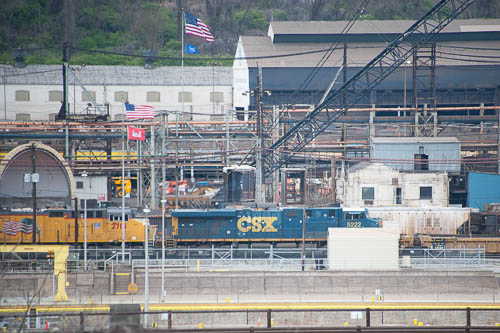
I mention all of this because a bike trail – the Great Allegheny Passage (GAP) -runs along the Mon River behind Kennywood Park. You can ride on a path directly behind the roller coasters. You can look across the river and see this U.S. Steel plant .
You can ride past a 1906 locomotive roundhouse in McKeesport.
Here’s some photos of said roundhouse.
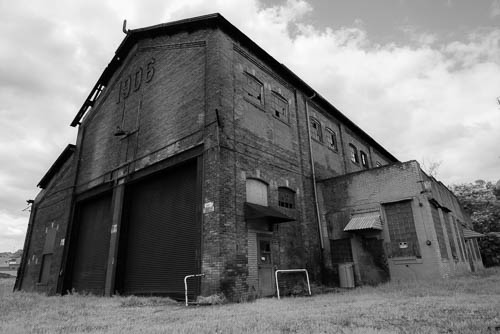
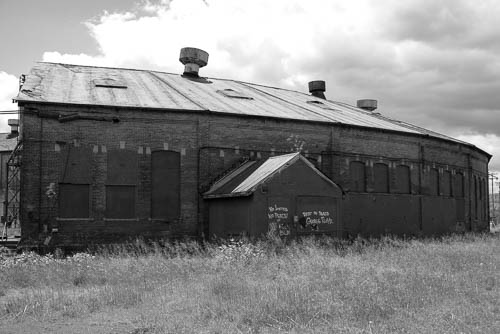
Jonathan took much better photos than I did. You can view Jonathan’s photos here, at our other blog.
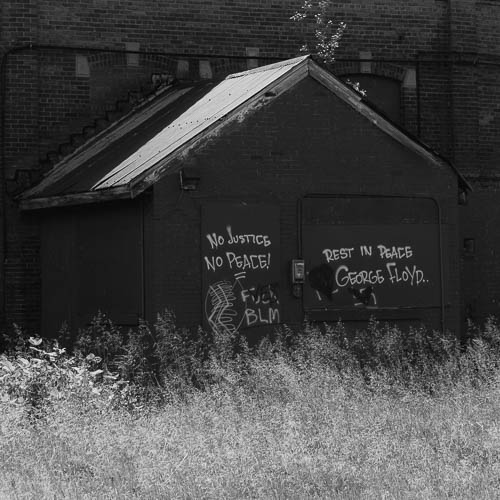
Sunset at Mount Saint Peter
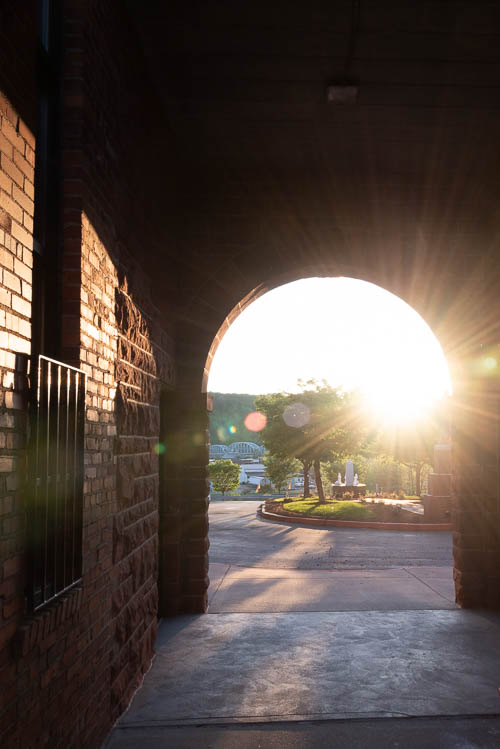
Eight days ago (so, on April 29), Jonathan and I celebrated our fifteenth wedding anniversary. We were married at Mount Saint Peter in New Kensington. Jonathan’s late mother, Fran, worked at the parish at that time. So, I have a special place in my heart for Mount Saint Peter.
I look for opportunities to develop my skill at sunset photography. So, I took my camera to Mount Saint Peter for this evening’s sunset. This almost didn’t happen because clouds frequently covered the sun this afternoon! In fact, clouds covered the sun WHILE I waited at Mount Saint Peter for the sun to set.
The clouds moved just in time for me to witness the sunset.
Now, you will see a bridge in the background of the first photo that I posted. This bridge crosses the Allegheny River in downtown New Kensington. The bridge sits in the river valley. Much of New Kensington sits in this same valley. However, Mount Saint Peter sits on a hill overlooking downtown New Ken.
I mention all of this because I like to think of the Allegheny River as “my river.” The Allegheny River is obviously NOT merely “my river.” I was actually born directly across the Susquehanna River from Harrisburg. I grew up near the Susquehanna and in the Allegheny Mountains. However, ever since I was a child and I visited my grandparents in Pittsburgh, I felt as if I belonged with the Allegheny River. Perhaps I lived along the Allegheny in another life? Perhaps I was always destined to return to the Allegheny?
